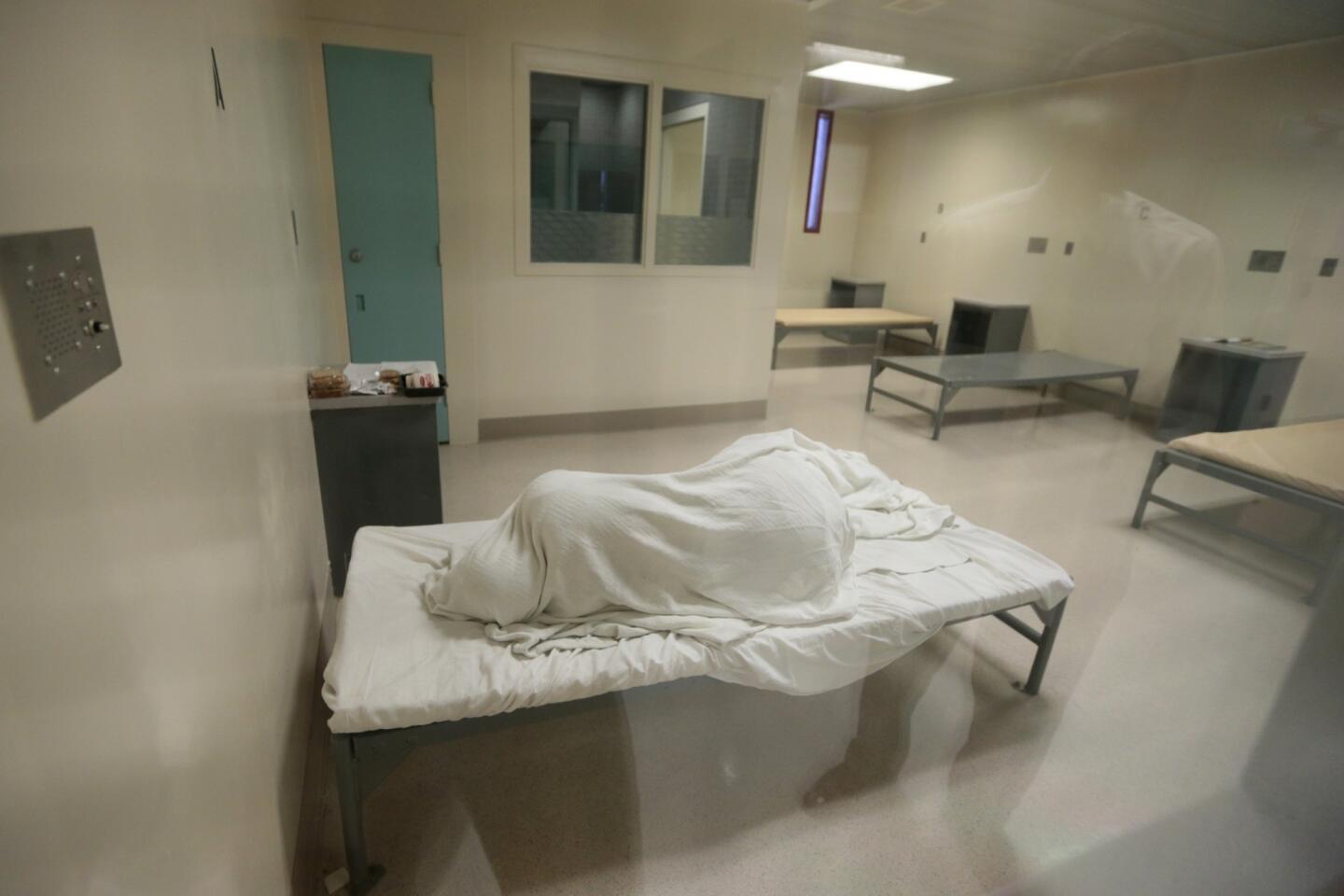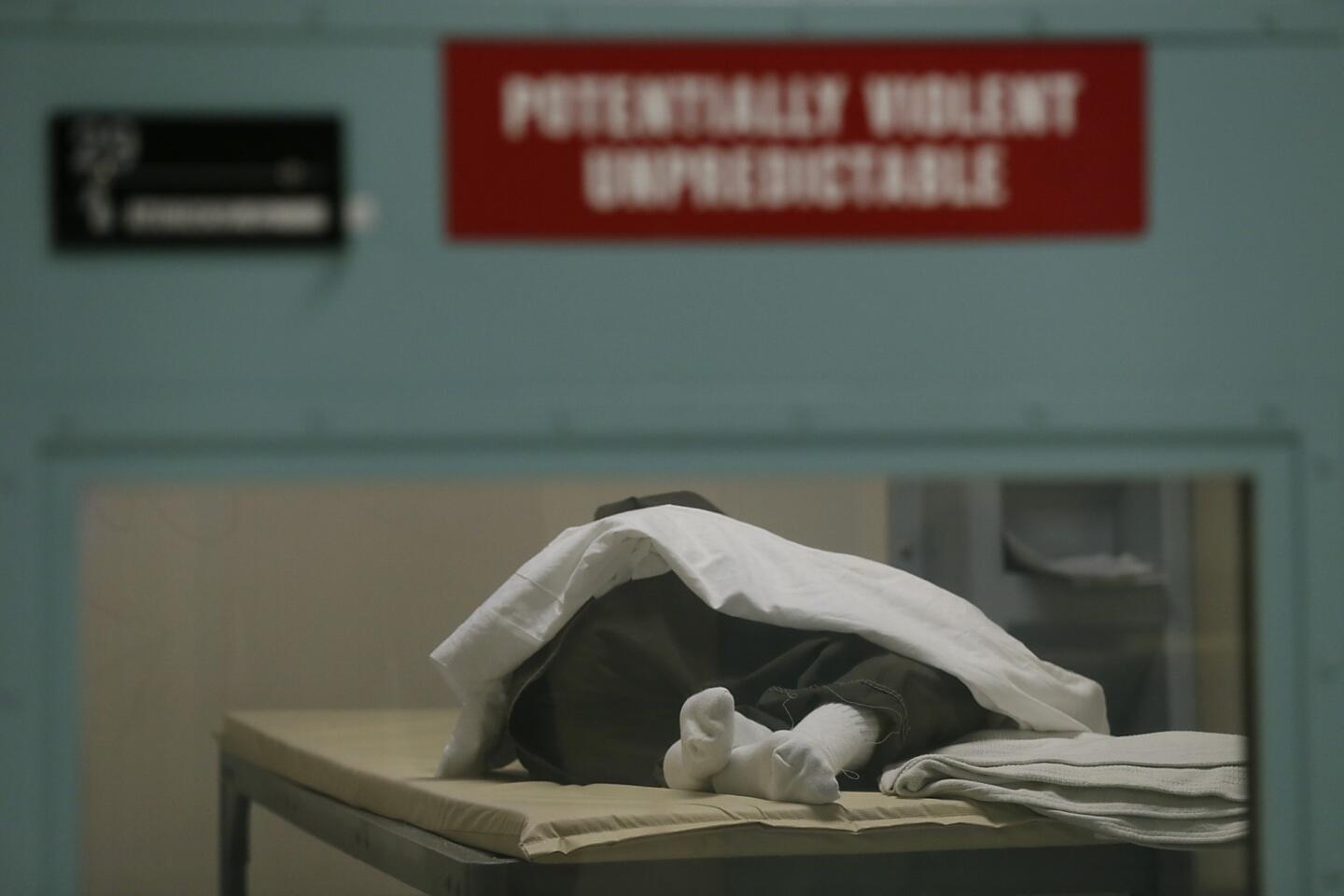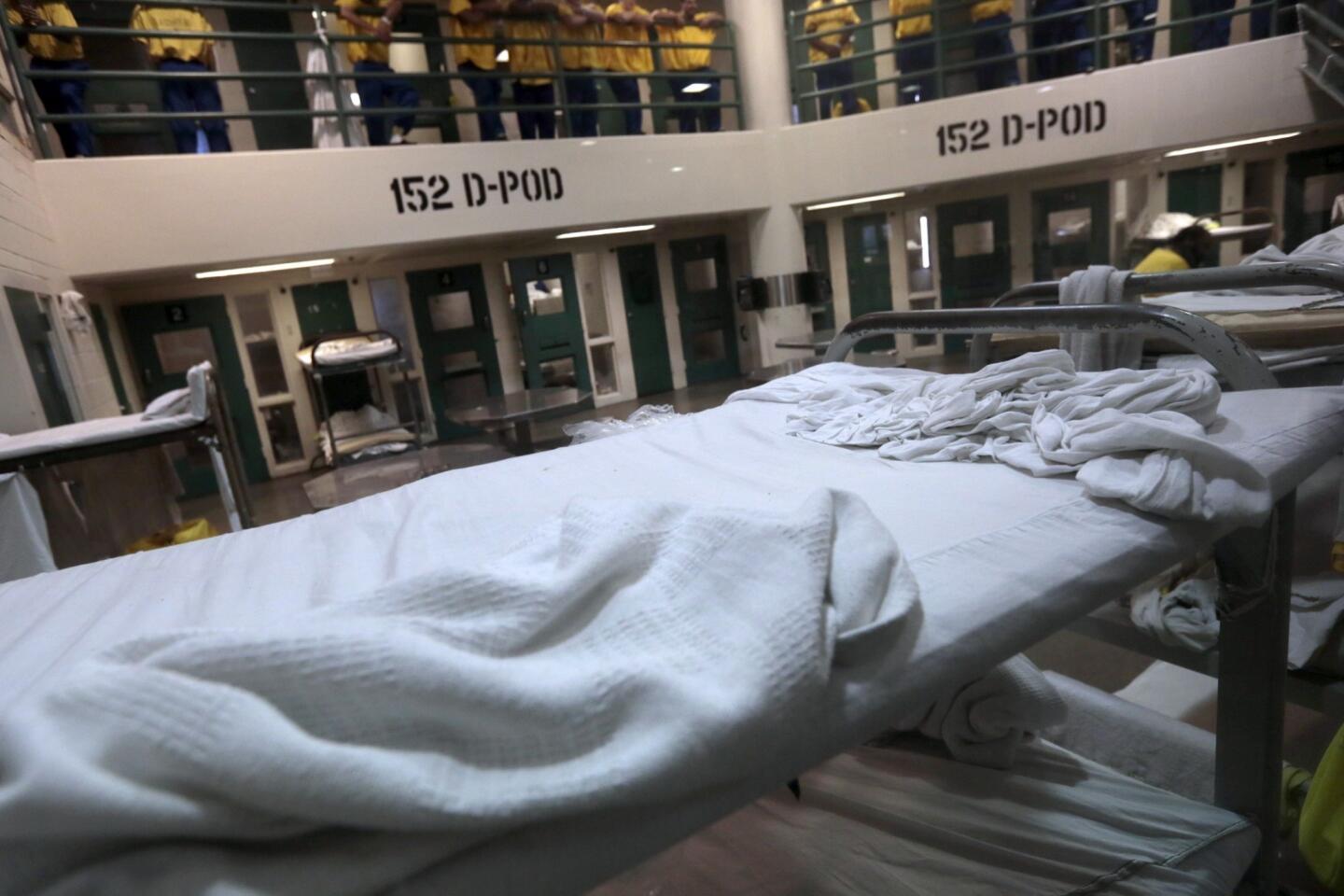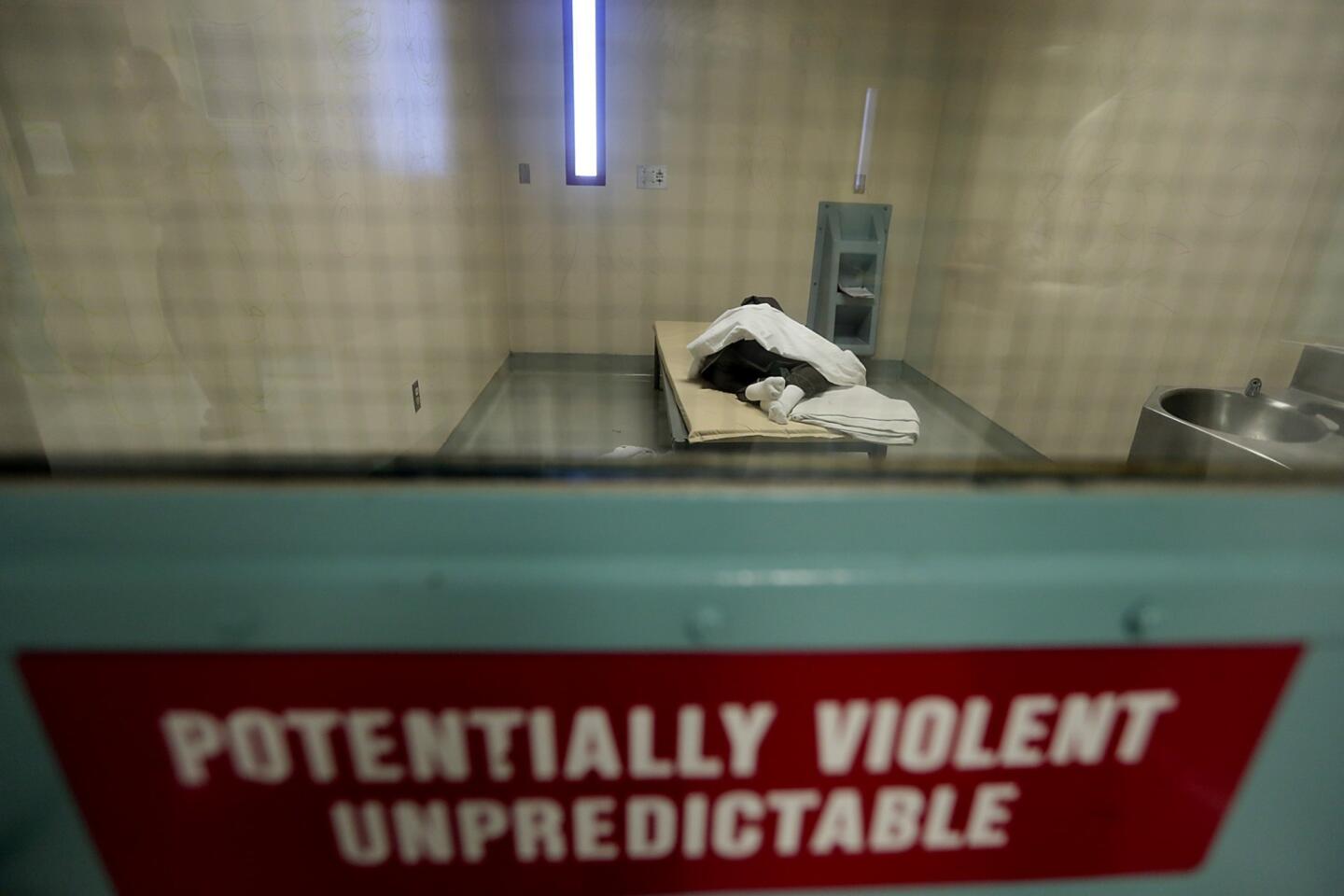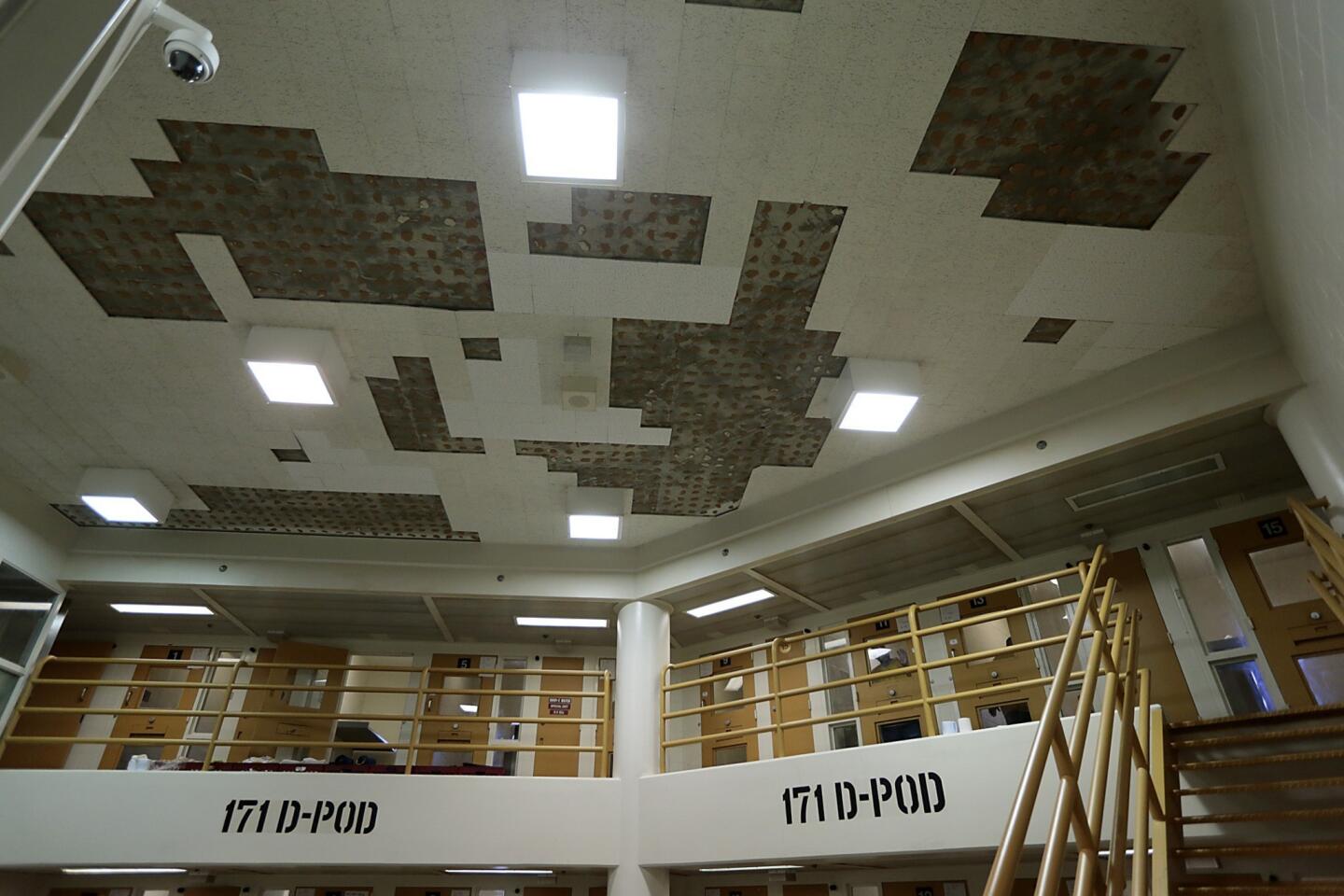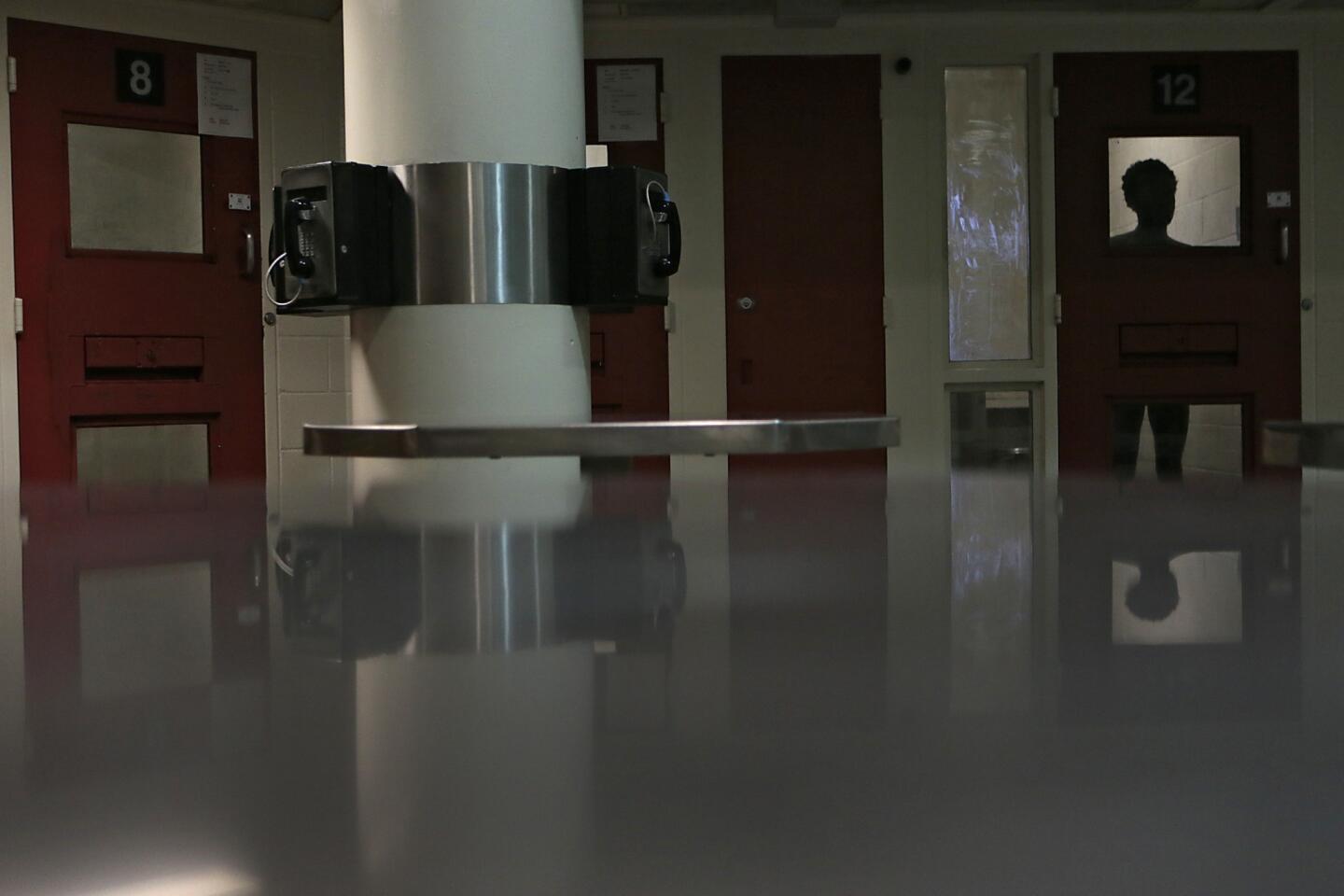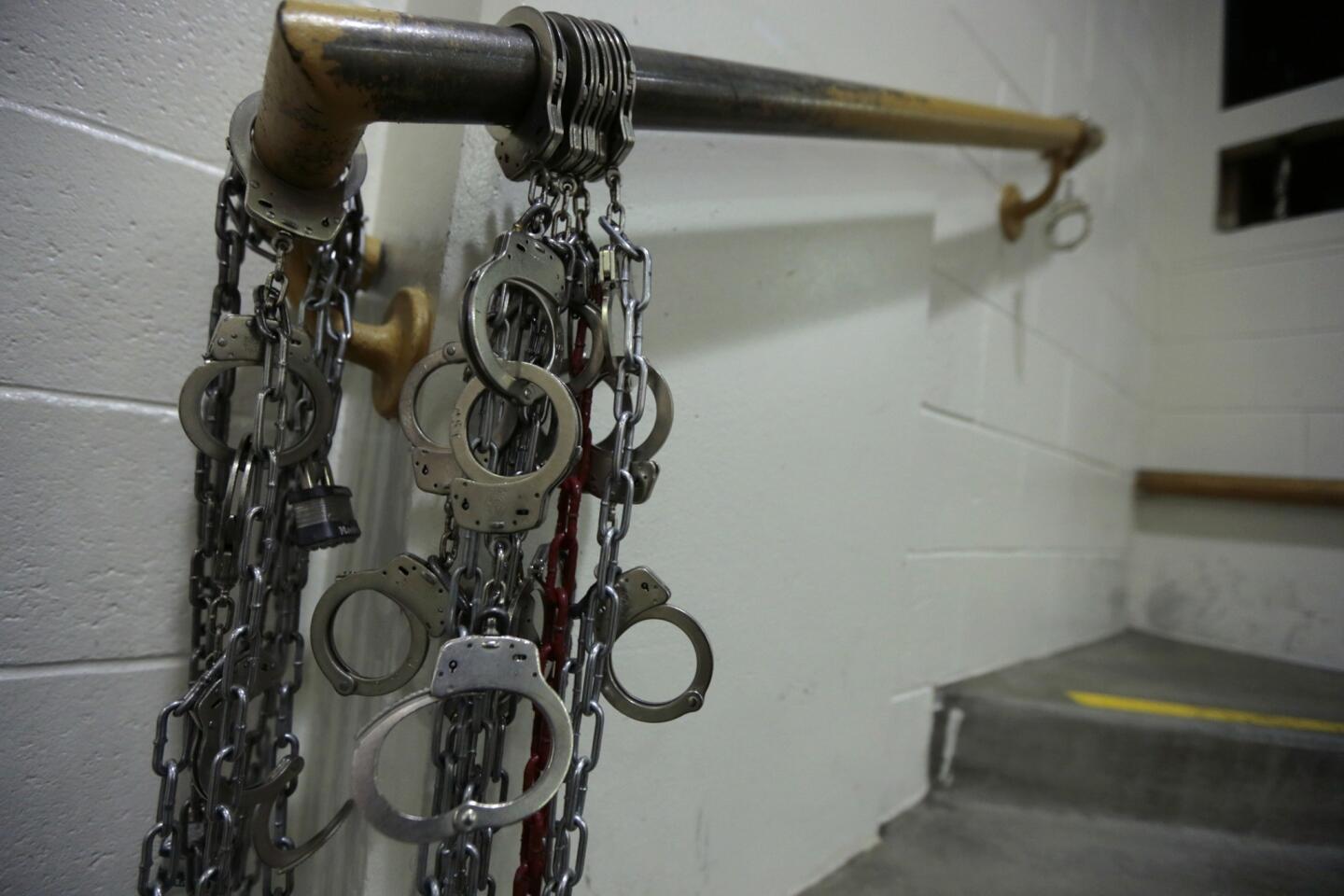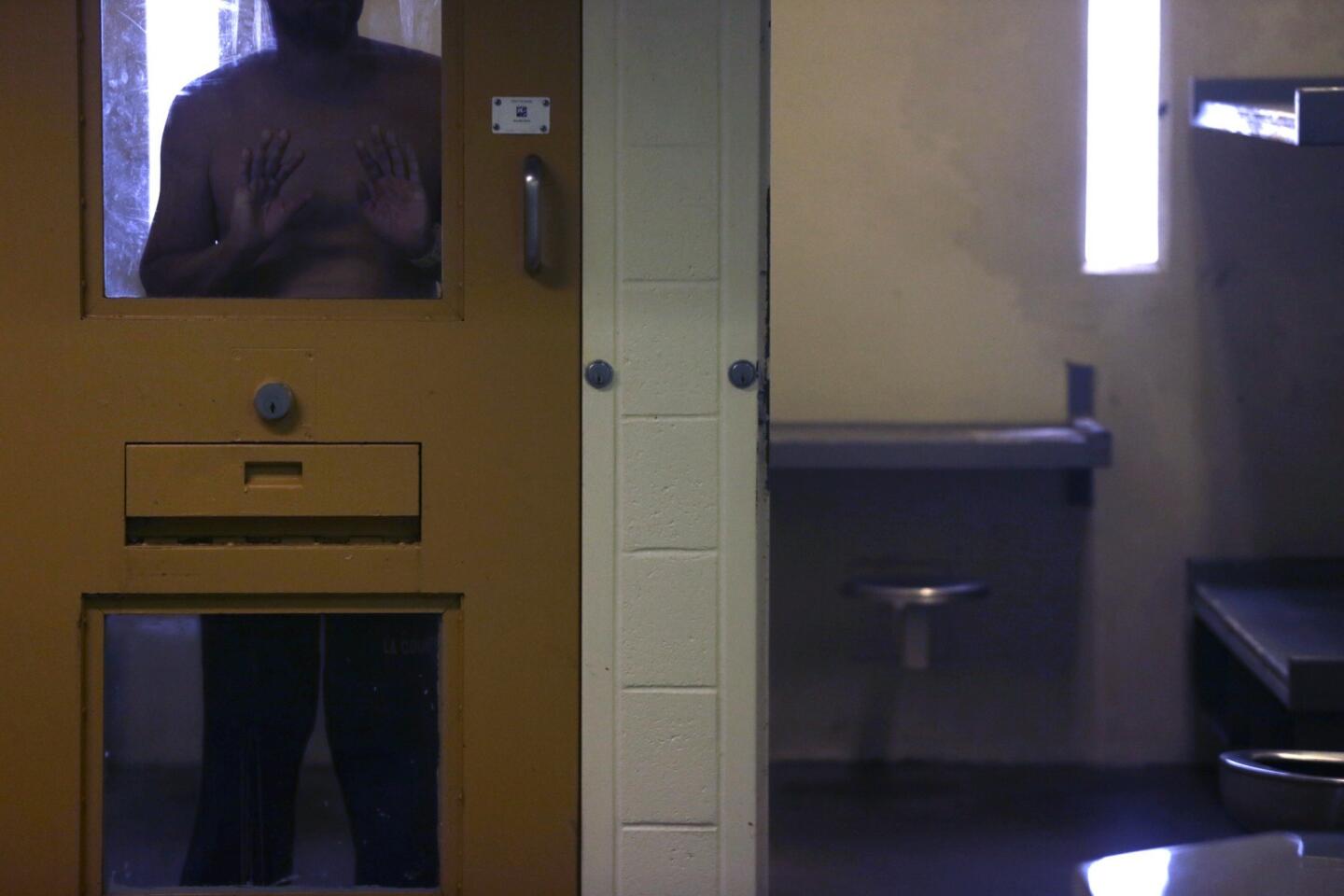It’s a crime to house the mentally ill this way
- Share via
If you routinely hear voices, hallucinate, sink into suicidal depression or suffer inescapable torment, Los Angeles has a place for you.
The county jail.
On Monday, the jail held 3,200 inmates diagnosed with a mental illness and accused of a crime. Most have not been to trial, many have waited months for their day in court, and the majority have cycled through at least once before. There’s no longer enough room to house them all in segregated areas, so 1,000 mentally ill men and 300 women are housed with the general population.
Sheriff Lee Baca has said for decades that he runs the nation’s largest mental hospital, but we’ve heard it so often that the shock has worn off. We know there’s something inexcusably wrong with the system — something backward and inhumane. But we shrug and move on, and the failure of public policy persists, at great public expense, while Los Angeles County officials order up another round of studies.
On the seventh floor of the Twin Towers, some of the most severely ill men stood in the locked single cells of a dorm-style bloc Monday, staring into space, banging on walls or howling. On the fifth floor, cells were filled to capacity and bunks were squeezed into the common dining area to handle the overflow. Some of the bunks are two beds high, some three. Privacy and quiet do not exist for inmates or their jailhouse therapists.
If you’re trying to figure out what makes for a desirable therapeutic environment, said Sara Hough, who runs the jail clinical program for the county Mental Health Department and takes pride in trying to deliver desperately needed care, “this ain’t it.”
County sheriff’s Sgt. Julie Geary pointed out an inmate who thinks that he’s Abraham Lincoln and that he’s possessed by a spirit. Nearby was a man who’s been in and out of jail so many times, Geary is on a first-name basis with him. “You’re back,” she recalled telling Herman. And she knows which inmates can be expected to complain that poisonous gas is being piped into their cells.
On the fifth floor, a 49-year-old inmate squatted and spoke to me through a small opening in a locked door. He was diagnosed with paranoid schizophrenia as a young man, he said. I asked how many different times he’s been in jail since then.
“About 15,” he guessed.
And the total amount of time he’s been locked up?
“Sir, to be honest with you, about 27 years.”
While I spoke to him, another middle-aged man kept gesturing through a window that he wanted to talk, too.
“Sir,” he said, “I’m just trying to get into a drug program.”
He rattled off a list of diagnoses he’s received, including bipolar disorder and schizoaffective disorder. Like the 15-timer, he’s been in jail so many times he could only guess at the number.
“About 10,” he said.
Clearly, locking these men up over and over again isn’t working, and it isn’t cheap. But it’s what the system has been doing for years in Los Angeles County and in jails and prisons across the country.
Therapists know it. Judges know it, because they see the same offenders churn through their courtrooms, many of them for drug possession and minor offenses in which the underlying cause is often a mental illness. And jailers surely know it, though the problem is not of their making or of any other single agency’s.
“We’re on the same page here,” sheriff’s Cmdr. David Fender said Monday when I met with him and mental health officials at the jail. “The entire leadership” of the Sheriff’s Department “believes we’ve got to do something about this.”
No doubt, so what’s the plan?
The county Board of Supervisors is pushing ahead, after years of delay, with plans to update jail facilities in hopes of fending off possible federal intervention following myriad reports of inmate abuse and deplorable conditions. Earlier this year, the supes hired a consultant to make proposals for demolishing the dungeon-like Men’s Central Jail, building a new facility in its place and updating other detention centers. At Tuesday’s board meeting, five proposals were aired, including construction of a jail devoted entirely to inmates with medical and mental health problems.
But would that be a new direction, or the same failed strategy in a new and improved building? Even when inmates get counseling and meds in jail, the majority of them leave with no long-term recovery plan or supervision on the outside, so guess where they end up.
The costs of the proposals ranged from $1.32 billion to $1.62 billion, and no doubt some upgrades are needed. But several dozen demonstrators at the meeting called for no new jails, and many of them stepped to the mike to demand a greater investment in steering people out of detention.
One of the speakers, Marsha Temple, cited an earlier study recommending community treatment centers rather than incarceration for many of those with mental health problems. She points out that permanent supportive housing and treatment would offer a far better chance at recovery, and would cost a fraction of what it takes to throw someone into a jail cell.
“Why are we locking up people who are mentally ill?” Temple asked me rhetorically Tuesday afternoon, her tone suggesting the practice is nothing short of barbaric. And she said declining birth rates and crime rates make her fear that more jail space will lead to more warehousing of those who ought to be in treatment rather than in jail.
Temple runs the L.A. nonprofit Integrated Recovery Network, which contacts inmates before their release, then follows them back out with supportive services like housing assistance, job training and mental health counseling. But her group can handle only a fraction of the need. Temple has been strategizing with judges, attorneys and treatment providers to push for similar services at the time of arraignment, with the goal of avoiding incarceration altogether, particularly for nonviolent offenders.
That’s already being done on a small scale, with the county’s Homeless Alternative to Living on the Streets program. But 3,200 people with a mental illness are behind bars (17% of the jail population).
That’s shameful, and once you’ve looked into their eyes, you’re haunted by the conviction that many of them are serving time for the crime of being afflicted. If the supervisors have trouble finding the will to do right by such a vulnerable, stigmatized population, maybe they should take one more tour of the nation’s largest mental hospital.
Video: Tackling the issues of prison overcrowding and mental illness among inmates
More to Read
Sign up for Essential California
The most important California stories and recommendations in your inbox every morning.
You may occasionally receive promotional content from the Los Angeles Times.
